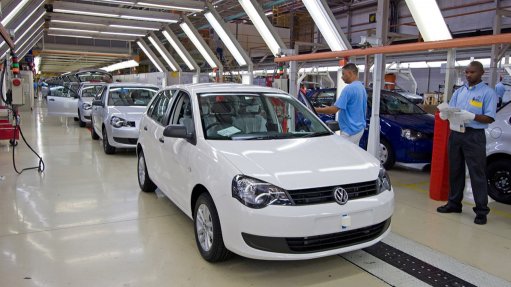
The VWSA Uitenhage plant
Photo by: VWSA
Volkswagen Group South Africa (VWSA) should this year see record production at its engine plant, in Uitenhage, in the Eastern Cape.
VWSA MD David Powels says engine plant production reached 110 708 units in 2012, growing to 151 269 units in 2013. This year, he expects production to expand by a further 14%, to reach 172 873 units.
Around 45 000 units of this number will be for the local market, while 46 765 units will go to China, 73 448 to India and 7 488 units to Malaysia.
Most of this year’s growth is expected to come from India, which last year received 32 117 units from South Africa.
The VWSA plant produces four-cylinder petrol engines.
Powels says the plant operates a four-shift, seven-day production week, with the fourth shift running on the weekends.
“If we could produce more engines, we would have more customers for them.”
Vehicle production at Uitenhage was a different story in 2013, with production dropping 8% from 2012 to 2013, to reach 103 378 units.
Production of the Polo for the export market dropped 2 000 units, to 52 388 units, with local Polo volumes down roughly 5 000 units, to 17 034. Polo Vivo production, which is aimed solely at the local market, declined around 2 000 units, to 33 975 units.
Powels says VWSA last year “prioritised production for the export market”, rather than the local market.
The forecast is for the VWSA plant to up vehicle production 6%, to 109 649 units, in 2014, with 46 890 Polos destined for the export market, as well as 25 411 Polos and 37 348 Polo Vivos for the local market.
Powels says VWSA export Polos to Europe and Japan, and that these markets remain financially strained, which is why he expects exports to drop by roughly 5 500 units in 2014.
He notes that the VWSA plant has decreased energy use by 20% since 2010, carbon dioxide emissions by 14%, waste generated by 26%, and water use by 40%.
The new year sees some new projects to further reduce these numbers, including Phase 1 of a waste water reverse osmosis system, which will recycle effluent water to parts of the paint shop.
The potential savings here are 53 829 m3 of water a year.
NEW AMAROK TO BE MADE IN SA?
VWSA would like its Eastern Cape plant to be considered as a production hub for the new generation Amarok one-ton bakkie, says Powels – “if we take a long-term view”.
He emphasises that the introduction of the second generation bakkie was “quite some way off”, as light commercial vehicles have a longer model life-cycle than the typical seven-year passenger-car cycle.
“There is no firm planning yet . . . We are keeping it on our radar screens. We believe there is demand for a robust, affordable one-ton bakkie in South Africa and Africa.”
Manufacturers which produce one-ton bakkies in South Africa, exporting to Africa and worldwide, include Ford Motor Company of Southern Africa (Ranger), General Motors South Africa (Isuzu), Nissan South Africa (Hardbody), and Toyota South Africa Motors (Hilux).